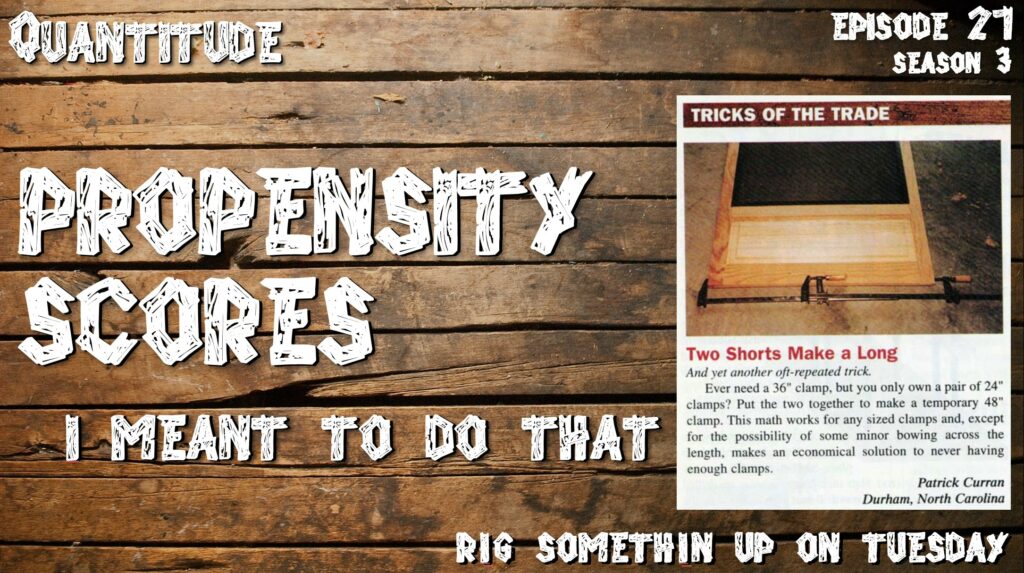In this week’s episode Patrick and Greg get to hang out with Noah Greifer from the Institute for Quantitative Social Sciences at Harvard University to delve into the fascinating world of propensity scores: what they are, how we obtain them, and how they can be thoughtfully used to strengthen our causal inferences. Along the way we also mention Popular Woodworking, fixing things on the back end, hiding your own Easter eggs, 18 hour warnings, easy undergrad majors, Meyers-Briggs career predictions, picking an ideal advisor, SASholes, demyelination, hearing asterisks, being an ANCOVist, the 11th Commandment, what keeps you up at night, answering the question you want to, and it’s all BS.
Lightly-Edited Episode Transcript
We provide a lightly-edited and obviously imperfect audio transcript of the episode available here. This is not an exact representation of the audio, but does provide a searchable document with identified speakers and associated time stamps.
Suggested Readings
Abadie, A., & Spiess, J. (2021). Robust post-matching inference. Journal of the American Statistical Association, 1-13.
Austin, P. C. (2011). An introduction to propensity score methods for reducing the effects of confounding in observational studies. Multivariate Behavioral Research, 46, 399-424.
Beal, S. J., & Kupzyk, K. A. (2014). An introduction to propensity scores: what, when, and how. The Journal of Early Adolescence, 34, 66-92.
Chattopadhyay, A., Hase, C. H., & Zubizarreta, J. R. (2020). Balancing vs modeling approaches to weighting in practice. Statistics in Medicine, 39, 3227-3254.
Curran, P.J. (1997). Two shorts make a long. Popular Woodworking, 97, 28. [PDF]
Ho, D. E., Imai, K., King, G., & Stuart, E. A. (2007). Matching as nonparametric preprocessing for reducing model dependence in parametric causal inference. Political Analysis, 15, 199-236.
Chattopadhyay, A., & Zubizarreta, J. R. (2021). On the implied weights of linear regression for causal inference. arXiv preprint arXiv:2104.06581.
Freedman, D. A., & Berk, R. A. (2008). Weighting regressions by propensity scores. Evaluation Review, 32, 392-409.
King, G., & Nielsen, R. (2019). Why propensity scores should not be used for matching. Political Analysis, 27, 435-454.
Rosenbaum, P. R., & Rubin, D. B. (1983). The central role of the propensity score in observational studies for causal effects. Biometrika, 70(1), 41-55.
Rubin, D. B., & Thomas, N. (1996). Matching using estimated propensity scores: relating theory to practice. Biometrics, 249-264.
R Packages Authored by Noah Greifer
cobalt (https://ngreifer.github.io/cobalt/)
MatchIt (https://kosukeimai.github.io/MatchIt/)
WeightIt (https://ngreifer.github.io/WeightIt/)

